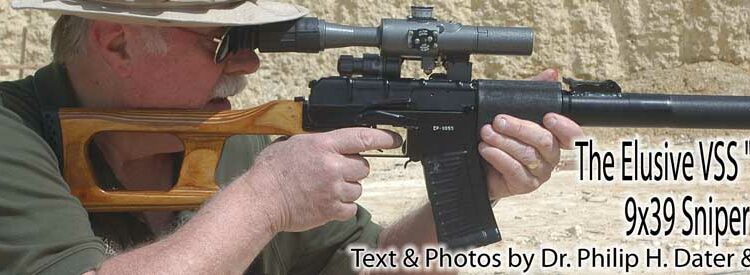By Dan Shea & Dr. Philip H. Dater
The Soviet Union and its current itineration, Russia, have long been known for innovative weapon development, only some of which has seen the light of day in the Western world. There is a long history of effectively “keeping the lid” on new weapons until someone on the other side runs into them in the field and reports on them. Rumors of a new cartridge and both a submachine gun and silenced sniper rifle utilizing this ammunition have leaked into the general Western military communities for many years. Some have been on display at shows, and there have been several Western military personnel and firearms writers who have studied these and written some information on them.
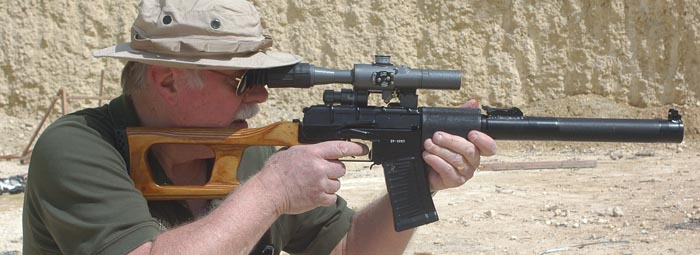
None of these unique weapons have been seen by the general military population other than in isolated news clips, especially from the recent unpleasantness in the former Soviet State of Georgia. When Russian military forces crossed into the northern provinces of Georgia and swiftly cut them off from the south, much of the world recoiled in horror and voiced platitudes about how the Russians must stop this assault. Within a short period the Russian military forces brilliantly transitioned into the “Peace-keepers” in the region, and photos leaked out to the Western press and Intel communities showed strange, Dragunov-looking weapons that were clearly too short to be in 7.62x54R caliber, and also very clearly integrally suppressed. Pandemonium ensued as all resources were called upon to ID this weapon and the threat it represents.
There have been some excellent but isolated references on the 9x39mm ammunition and firearms, and Internet resources are limited of course to the writer’s experience with the weapons – usually non-existent other than in computer games. Real time, take-it-apart, pull the trigger, hands-on testing has been very rare and certainly not widely reported. Charles Cutshaw’s excellent book The New World of Russian Small Arms and Ammo does an excellent job and should be on everyone’s bookshelf, but his 1990s treatise is limited to Lyn Haywood’s line drawings for illustration and he was not allowed to disassemble the weapons.
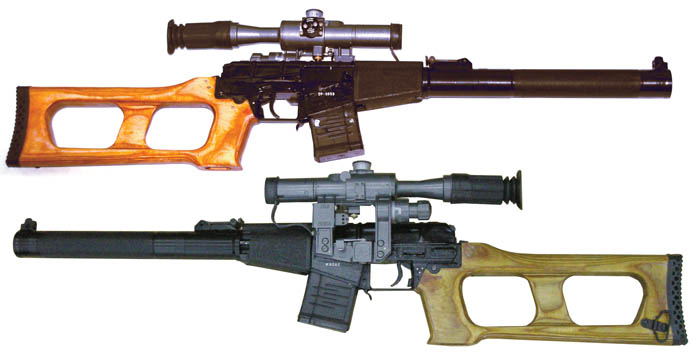
Two Small Arms Review writers were granted the opportunity to examine in detail both the weapons and the ammunition in the field at a discreet location in Southwest Asia. In addition to extensive disassembly and photography, we were also given the opportunity to test fire both the VSS silenced sniper rifle and the VIKHR submachine gun with our meters ready to conduct scientific testing. We wanted to be as thorough as possible with this unique opportunity.
There are some myths and assumptions made that we will try to gently correct: or at least provide another point of view on. The first being that the MA “VIKHR” (Whirlwind) submachine gun is the same as the VSS “Vintorez” (Thread-cutter) with the exception of the buttstock and suppressor. This is not true though the receivers are similar and some parts will interchange, they are not the same receiver with one simply being suppressed.
As is their standard procedure, the Russians had several factories competing to manufacture the 9x39mm weapon systems they required. Then end product offerings are as follows:
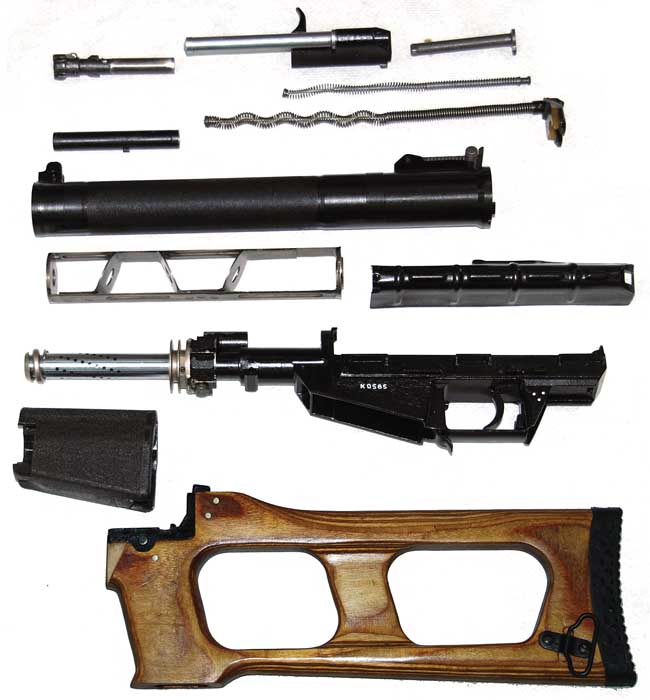
TsNIITochmash:
- MA “VIKHR” (Whirlwind) unsuppressed miniature assault rifle.
- AS “VAL” (Rampart) based on VIKHR, side folding stock: not a “take-down.”
- VSS “Vintorez” (Thread-cutter) based on VIKHR: removable stock, “take-down.”
Tula KBP:
- A-91 offered in a number of calibers, can operate with or without the suppressor.
- VSK-94 sniper model of the A-91, in a case, could have wood (early) or polymer stock and fire without suppressor installed.
Our concern today is with two of the offerings from TsNIITochmash: the VIKHR and the VSS.
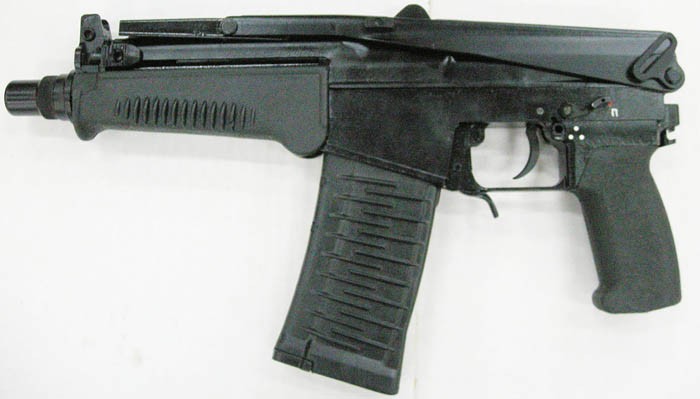
The 9×39 cartridge
There is a paucity of real, hands-on information available on the 9x39mm ammunition. What we did find states that there are two different variants of the 9x39mm ammunition. One, the SP-5, is conventional ball ammunition. We only had available less than ten rounds of this, so we did not disassemble it. The other is the SP-6 round, which is a black tipped armor piercing ammunition.
The Testing
We spent the better part of the only delightfully sunny day of our visit on the range performing function, velocity, sound, and crude penetration testing. The temperature was 83.5/29(F/C), humidity was 37%, and the station pressure was 675 mmHg. The velocity of sound calculated to 1,143 ft/sec. We used the protocol in Mil-Std-1474D with the microphone 1 meter to the left of the muzzle 90 degrees to the bore axis, 1.6 meters above dirt (there was no grass in sight). For sound measurements, we used the Larson-Davis 800B with the LD 2530 1/4 inch pressure microphone and a recently re-certified LD CA250 calibrator. For velocity and rate-of-fire measurements, we used a PACT chronograph/timer.
For our non-suppressed sound levels, we shot the SP-6 ammunition in the Vikhr. The non-suppressed average was 159.8 dB with a zero standard deviation. Velocity was 957.5 ft/second for the SP-5 SNIPER and 961.4 ft/second for the SP-6 armor piercing. Rate of fire was 789 rounds per minute.
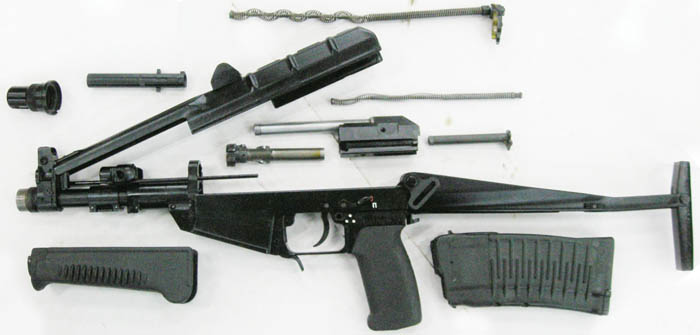
Suppressed, using the VSS, the measured sound levels were: 130.0, 130.3, 130.8, 129.0, 127.5, and 130.8 deciBels. This averaged to 129.7 dB for a respectable reduction of 30.1 dB. The first round was 0.3dB louder than the average of the remaining rounds, and the standard deviation was 1.17. Velocity averaged 924.3 ft/second, only slightly less than the velocity in the Vikhr. With the SP-5 Sniper AP ammunition, the cyclic rate of the VSS rifle was 960 rounds per minute. This increase compared to the similarly designed Vikhr is predictable due to increased bore pressure of the suppressed weapon causing more rapid opening of the action.
We did measure the sound level and velocity of a few rounds of the standard SP-5 ball ammunition. The velocity measured 905 ft/second and the sound level was 120.8 dB for slightly less than 39 dB reduction. The decreased velocity and sound level are probably due to a heavier bullet containing a lead core rather than the steel core of the SP-5 SNIPER ammunition.
We did not have the facilities at this time to measure group size, although we understand that the accuracy is excellent out to 150 meters and our observation indicated 1-2 MOA. The optical sight accompanying the VSS has stadia specifically calibrated for the SP-5 Sniper armor piercing round.
We did disassemble the silencer the day following testing, and we noted some rust appearing on the baffles. This suggests that the ammunition may be corrosive. There was also noted to be significant carbon build-up on the outside of the barrel in the entrance chamber (that part which surrounds the ported section).
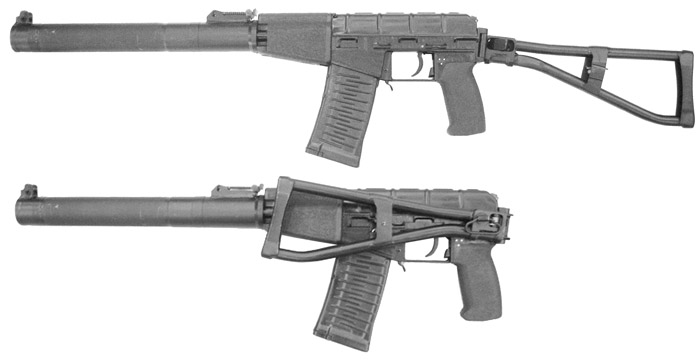
Summary
The 9x39mm cartridge is indeed a formidable piece of small arms ordnance. Although we only weighed the AP projectile, its weight of 245 grains, velocity of 924 ft/second and kinetic energy at the muzzle of 470 ft-lbs makes this a definitely lethal weapon. The VSS was pleasant enough to shoot. The trigger pull was among the better military triggers, and the recoil was not unpleasant.
Dan’s take: “I wouldn’t hesitate to consider the VSS or the AS-VAL for an operation in areas that contact is likely to be under 400 meters, and consider that forces who may encounter this weapon should train up on it. After reasonably extensive testing, I have a new respect for this weapon design, and look forward to testing more modern variants. Contrary to claims I had seen repeatedly written that the VSS couldn’t stand up to fully automatic fire, my opinion is that it certainly could, at least long enough to perform more than a few live fire mission s – in that case the VSS is an excellent choice as a close-in marksman’s rifle with serious AP capability, that can double as an effective SMG for close encounters”.
Phil’s take: “Although the suppressor system is an older, rudimentary design similar to other Russian offerings, that does not make it ineffective on the battlefield. This system is purpose designed to be a formidable weapons system. While we do not know which came first, the ammunition or the weapon, I suspect that they were designed as a package. The ammunition is definitely specialized to accomplish a specific task, and the weapon is designed to maximize the capability of the ammunition. As a 200-300 meter silent sniper system, it is hard to beat having a highly effective lethal subsonic projectile, outstanding penetration, reliable cycling, and fully automatic capability for when circumstances really go down the tube.
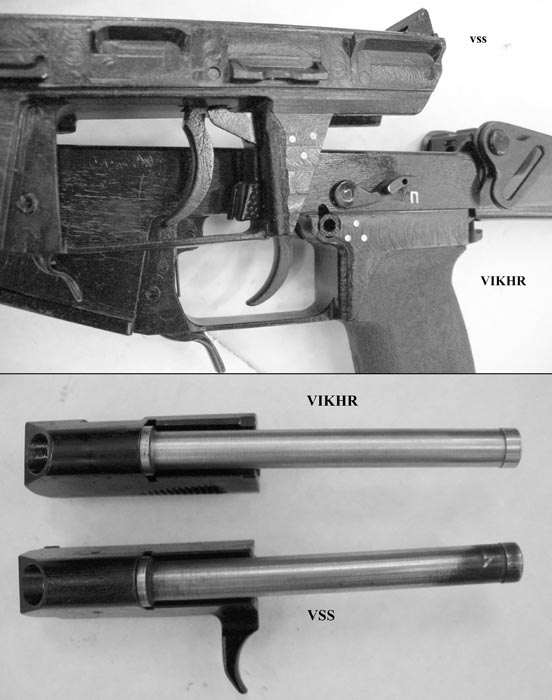
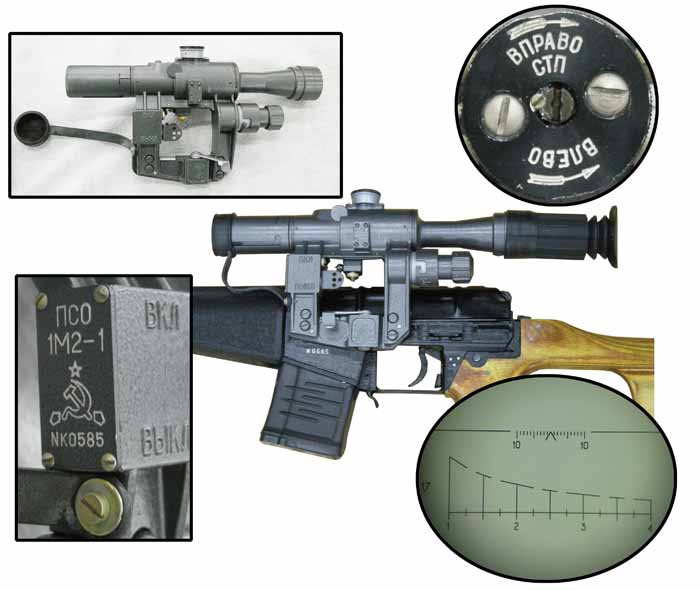
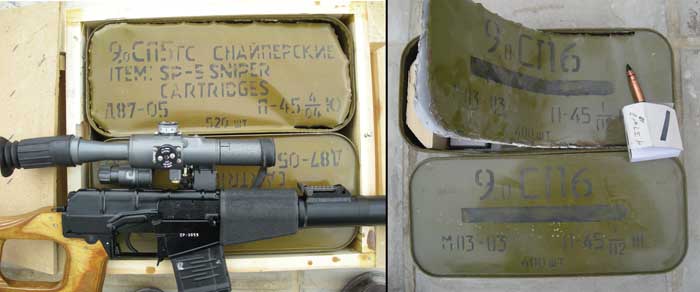
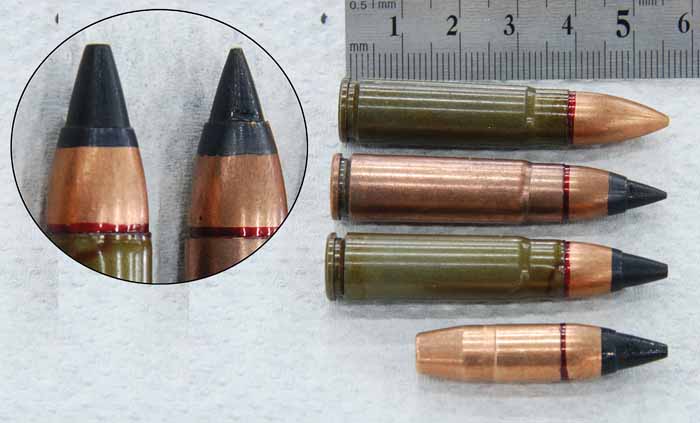
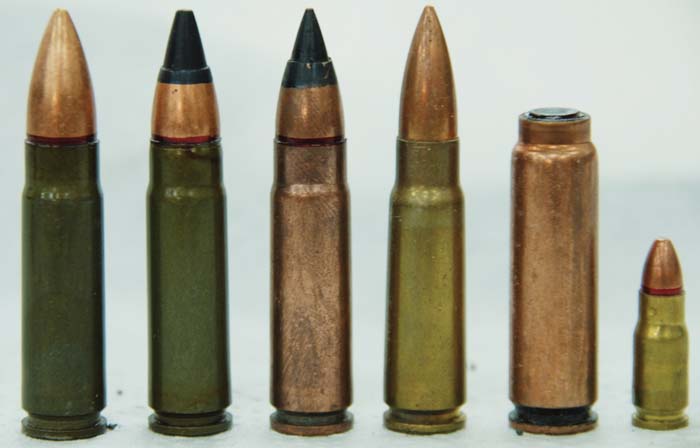
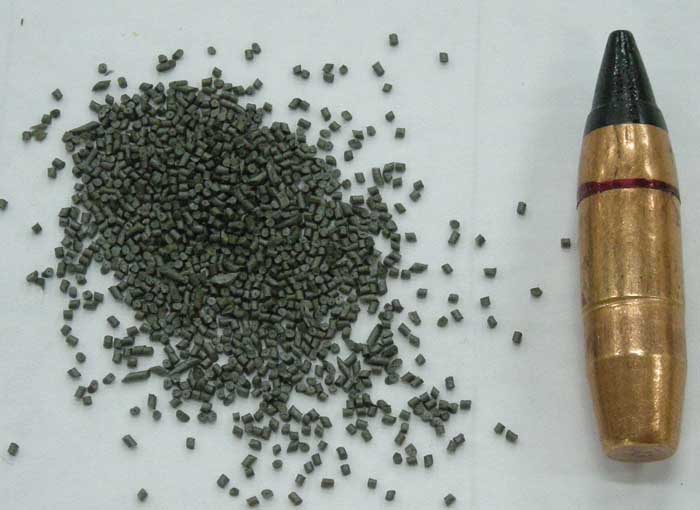

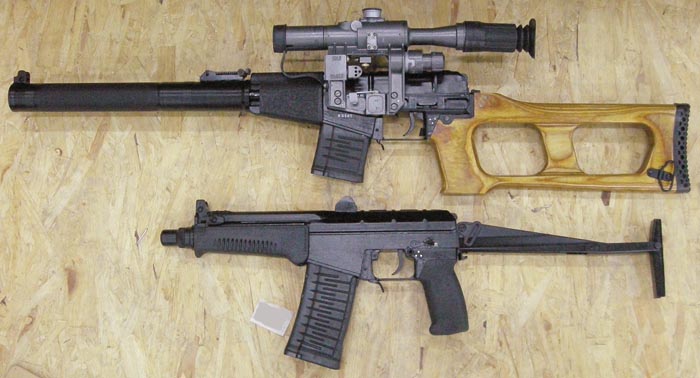









| This article first appeared in Small Arms Review V13N3 (December 2009) |



